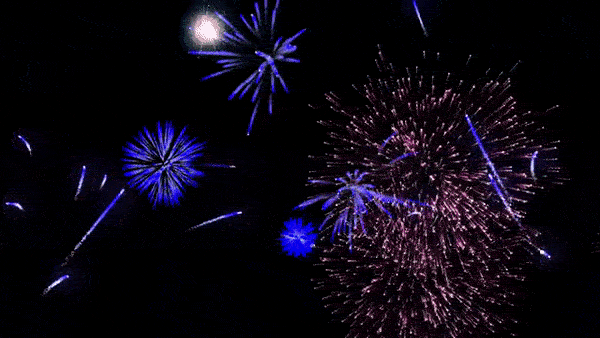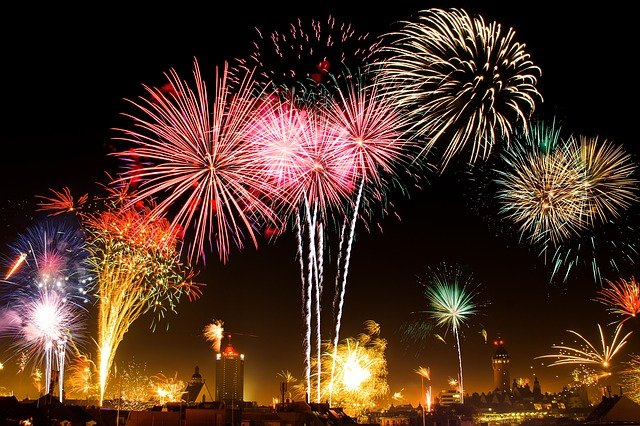New Year | Wilstar.com (original) (raw)
New Year

For thousands of years, the New Year has been a festival of rebirth and reflection, allowing people all over the world to celebrate another great year.
New Year’s Day is observed by most countries worldwide on January 1st, the first day of the New Year, following both the Gregorian and the Julian calendar. The New Year is often marked by fireworks, parades, and reflection upon the last year while looking ahead to a New Year of future possibilities. Many people celebrate the New Year in the company of loved ones, observing traditions meant to bring luck and success in the upcoming year. Many Cultures celebrate in their own unique way. Typically, the customs and traditions of involve celebrating with champagne and a variety of different foods. New Years marks a date of happiness and a clean slate. For many celebrating the Year of 2022 it is their opportunity to learn from the prior year and make positive changes in their life beginning on the 1st day of the year.

History
New Year’s is one of the oldest holidays still celebrated, but the exact date and nature of the festivities of New Year has changed over time. It originated thousands of years ago in ancient Babylon, celebrated as an eleven-day festival on the first day of spring. During this time, many cultures used the sun and moon cycle to decide the “first” day of the year. It wasn’t until Julius Caesar implemented the Julian calendar that January 1st became the common day for the New Year. In fact, different cultures and areas of the world celebrate New Years on a variety of days throughout the year.
The content of New Years festivities has varied as well. While early celebrations were more paganistic in nature, celebrating Earth’s cycles, Christian tradition celebrates the Feast of the Circumcision of Christ on New Year’s Day. Roman Catholics also often celebrate Solemnity of Mary, Mother of God, a feast honoring Mary. However, in the twentieth century, New Years grew into its own celebration and mostly separated from the common association with religion. The New Year celebration is a holiday associated with nationality, relationships, and introspection rather than a religious celebration, although many people do still follow older traditions.
Resolutions and Traditions
While celebrating The New Year varies all over the world, common traditions include:
- Making New Year resolutions or goals to improve one’s life.
- Common New Year resolutions concern diet, exercise, bad habits, and other issues concerning personal wellness. A common view is to use the first day of the new year as a clean slate.
- A gathering of loved ones. Here you’ll typically find champagne, feasting, confetti, noise makers, and other methods of merriment
- Fireworks, parades, and concerts.
- Famous parades include London’s New Year’s Day Parade and the Rose Parade in Pasadena, California.
- Superstitions concerning food or visitors to bring luck.
This especially includes circle-shaped foods, which symbolize cycles. The reasoning behind these superstitions is that the first day of the year sets precedent for the following days. A common superstition specific to New Year’s Day concerns a household’s first visitor of the year—tradition states that if a tall, dark-haired stranger is the first to walk through your door, called the First Footer or Lucky Bird, you’ll have good luck all year. Also, if you want to subscribe to superstition, don’t let anything leave the house on New Year’s Day, except for people. Tradition says: don’t take out the trash and leave anything you want to take out of the house on New Year’s Day outside the night before. If you must remove something, make sure to replace it by bringing an item into the house. These policies of balance apply in other areas as well—avoiding paying bills, breaking anything, or shedding tears.
Toasting

New Year Toasts typically concern gratefulness for the past year’s blessings, hope and luck or the future, and thanking guests for their New Years company. In coastal regions, running into a body of water or splashing water on one another is common, symbolizing the cleansing, “rebirth” theme associated with the holiday.
However, many nations and cultures within them have their own characteristic way of celebrating the New Year.
Foods Commonly Eaten
American Citizens often celebrate the New Year with a party featuring toasting, drinking and fireworks on New Year’s Eve late into the night before New Year’s Day, where the gathering counts down the final seconds to January 1st. Some might even get a kiss at midnight. Many English speaking countries play “Auld Lang Syne,” a New Year song celebrating the year’s happy moments. Americans often make resolutions and watch the Time Square Ball drop in New York City. Although much of this celebration occurs the night before during New Year’s Eve, the merrymaking typically continues into the following year. Football is a common fixture on New Year’s Day in America, usually the day of the Rose Bowl. Some foods considered “lucky” to eat during the festivities include:
- Circular shaped foods
- Black-eyed peas
- Cabbage
- Pork
In the southern U.S., particularly in the “low country” region of South Carolina, “Hoppin’ John” is an important New Year tradition. Originally made with old, heirloom ingredients such as Carolina gold rice and cow peas, Hoppin’ John is meant to bring prosperity in the new year. This dish is commonly eaten with collard greens fried in bacon grease and braised with vinegar as well as hot sauce and corn bread. Hoppin’ John and greens on New Year’s, like many U.S. culinary traditions, was originated by enslaved Africans hundreds of years ago and became popular with white Americans in the 19th and 20th centuries. The traditional type of rice and peas are often substituted with easier-to-find black eyed peas and common long grain rice. For extra luck New Year luck, some families put coins under their plates or add extra pork to their Hoppin’ John.
Cold-Water P lunges
In colder countries close to water, such as Canada, parts of the United States, the United Kingdom, and the Netherlands, it is customary to organize New Year cold-water plunges. These plunges and races, sometimes called a Polar Bear Plunge, often raise money for charity or awareness for a cause. This tradition is so popular that the first day of the year (January 1st) is also referred to as Polar Plunge Day by many in the U.S. The first Polar Bear Plunge took place on New Year’s Day, 1904, in South Boston, Massachusetts, when a local swim club leaped into Dorchester Bay. The largest annual plunge in the U.S. takes place in Maryland at Sandy Point State Park, which set a record in 2008 with 12,000 plungers showing up to raise money for the Special Olympics.
Popular New Year Song History
The song “Auld Lang Syne” is sung at the stroke of midnight in almost every English-speaking country in the world to bring in the new year. At least partially written by Robert Burns in the 1700’s, it was first published in 1796 after Burns’ death. Early variations of the song were sung prior to 1700 and inspired Burns to produce the modern rendition. An old Scottish tune, “Auld Lang Syne” literally means “old long ago,” or simply, “the good old days.”
Auld Lang Syne Complete Lyrics
Should auld acquaintance be forgot
And never brought to mind?
Should auld acquaintance be forgot
And days of auld lang syne?
For auld lang syne, my dear
For auld lang syne
We’ll tak a cup o’ kindness yet
For days of auld lang syne
We twa hae run about the braes
And pu’d the gowans fine
But we’ve wander’d mony a weary fit
Sin days of auld lang syne
We twa hae paidl’d i’ the burn
Frae morning sun till dine
But seas between us braid hae roar’d
Sin days of auld lang syne
For auld lang syne, my dear
For auld lang syne
We’ll tak a cup o’ kindness yet
For days of auld lang syne
And surely ye’ll be your pint-stowp
And surely I’ll be mine
And we’ll tak a cup o’ kindness yet
For auld lang syne
And there’s a hand, my trusty fiere
And gie’s a hand o’ thine
And we’ll tak a right gude-willy waught
For auld lang syne
For auld lang syne, my dear
For auld lang syne
We’ll tak a cup o’ kindness yet
For auld lang syne
For auld lang syne, my dear
For auld lang syne
We’ll tak a cup o’ kindness yet
For auld lang syne
Lunar New Year
Many Asian countries, including China and Korea, celebrate New Years by the Lunar calendar. This usually lands in late January or early February, depending on when the first new moon appears after Winter Solstice.
In China, families gather for feasting on traditional foods such as hot pot, noodles, and dumplings that are thought to influence the rest of the year. Families clean their homes and put out red decorations to clear out the old year and attract good luck. This celebration is as much about honoring ancestors and deities as it is about marking a new year. Family members are given red packets of money and speak “lucky” words. The final day of the fifteen day festival is celebrated with parades, fireworks, and lanterns.
Celebrations in France
The French typically celebrate New Year’s with a feast and a champagne toast, marking the first moments of New Year’s Day with kisses under the mistletoe, which most other cultures associate with Christmas celebrations. The French also consider New Year’s Day weather as a forecast for the upcoming year’s harvest, taking into account aspects like wind direction to predict the fruitfulness of crops and fishing.
New Year’s Eve in France is known as “La Saint-Sylvestre” or “réveillon de l’an” and is celebrated with costume parties and elaborate foods such as foie gras (goose liver pâté), oysters, escargot, tapenade, and elaborate terrines made from meats and gelatin.
Celebrations in the Philippines
In the Philippines, new years celebrations are very loud in order to scare away evil beings. There is often a midnight feast featuring twelve different round fruits to symbolize good luck for the twelve months of the year. Other traditional foods include sticky rice and noodles, but not chicken or fish because these animals are food foragers, which can be seen as bad luck for the food supply the next year.
Celebrations in Greece
Greeks celebrate New Year’s Day with card games and feasting. At midnight, the lights are turned off, and guests are served the Basil’s Pie, which contains a coin. Whoever gets the piece of pie containing the coin wins luck for the new year.
Celebrations in Russia
Russia’s New Year celebrations have been greatly affected by the country’s history. As religion was suppressed and Christmas celebrations were banned in the Soviet Union, New Year’s, or Novi God celebrations often included Christmas traditions such as decorated trees, which were relabeled as New Year Fir Trees. As the suppression left, these traditions stayed part of the New Year’s Day celebration. The holiday is also celebrated with feasts, champagne, and New Year wishes.
Celebrations in Spain
Spaniards celebrate their New Years with the custom of eating twelve grapes, each eaten at a clock-stroke at midnight. These symbolize good luck for each of the twelve months of the year.
Celebrations in Italy
Like U.S. southerners, Italians eat legumes (lentils instead of black eyed peas) and pork on Capodanno, which means “head of the year.” After big family dinners on New Year’s Eve, which is also the Feast of St. Sylvester, Italians go to their local piazzas for huge firework displays and public concerts. Italians are also known to wear red underwear on New Year’s Day to bring luck throughout the year.
Celebrations in Mexico
On New Year’s Eve in Mexico, families gather for big dinners of salted fish, olives, and tomatoes. Midnight champagne toasts are common, but Mexicans add a ring in the champagne glass that can’t be removed until all of the champagne has been drunk. It’s also traditional during new year celebrations to wear red underwear for good luck in love and yellow underwear for good luck in money during the new year. Some Mexican families will also drop twelve coins outside of their door and sweep them inside to invite prosperity or put a bag of lentils on their doorstep, and the song “El Año Viejo” can be heard all over the country. In Oaxaca, citizens eat donuts called buñuelos with honey and smash the plate after the donuts are finished to symbolize a break with the past year and the beginning of the new year.
Rosh Hashanah
In Judaism, New Years is celebrated on Rosh Hashanah, which falls in September or October depending on the year. Literally meaning “first of the year” in Hebrew, Rosh Hashanah is the beginning of a festival that ends with Yom Kippur, another High Holy Day in the Jewish faith, when Jews traditionally repent for the sins of the previous year. Like many world cultures, Judaism’s new year’s celebration involves casting out evil and clearing the way for good and light in the new year. The shofar, a trumpet made from a ram’s horn, is a holy instrument that is blown on both Rosh Hashanah and Yom Kippur to call all Jewish people to repent and reflect. Rosh Hashanah meals traditionally include symbolic foods thought to bring good fortune such as apples with honey and braided challah bread. The proper greeting for Rosh Hashanah is “L’shana tovah,” which means, “for a good year.”
Celebrations in Africa
Ancient Egyptians celebrated the New Year during the season when the Nile River would flood, and this new year tradition continues today in Egypt and Ethiopia. However, Yoruban tradition from Nigeria celebrates New Years in June, and the indigenous people of South Africa celebrate New Years in August.
Celebrations in Japan
Japan uses the Gregorian calendar and celebrates the New Year on January 1. Families eat mochi, soba noodles, and sushi, and ring bells 108 times at midnight to clear away the previous year and literally “ring in” the new year. Adult relatives give money to the children in their families, and many people send postcards to their friends and families, making sure that they arrive on January 1.
Celebrations in Scotland
Christmas was not celebrated in Scotland for centuries because of religious disagreements. Because of this, the Winter Solstice and Hogmanay are still bigger occasions for Scots with traditions dating back to the pagans and vikings. Scots will clean their houses before New Year’s Day and take the ashes from the previous year’s fire outside, clearing space for the year ahead. Groups of friends or whole communities will visit house to house and are welcome warmly with hugs and kisses for all. Torches and bonfires are a major part of the Scottish tradition, and some communities still observe the practice of dressing in animal hides like their pagan ancestors.
One of the biggest new years parties in the English speaking world takes place in Edinburgh, Scotland. Hogmanay, the Scottish name for New Year’s Eve, is celebrated with a parade of torches and a ceilidh, a traditional Scottish social dance. At midnight, fireworks go off from Edinburgh castle to ring in the new year. On New Year’s Day, Edinburgh celebrates with their own version of a Polar Plunge: the Loony Dook, where citizens dress in costumes and jump into the freezing waters of the Forth.
New Years is celebrated all over Scotland with big displays of fire. This goes back to the customs the vikings who would hold massive, raucous parties in the MidWinter season. For instance, the fireball parade has been held on Hogmanay in Stonehaven for over a century, and giant bonfires are held in towns all over the nation. The new year celebration is so massive that January 2nd is a national holiday in Scotland in order to give everyone time to recover from partying on New Year’s Day.